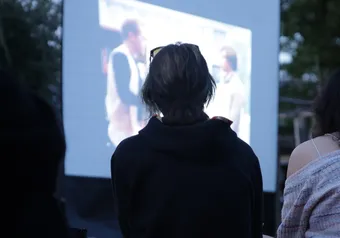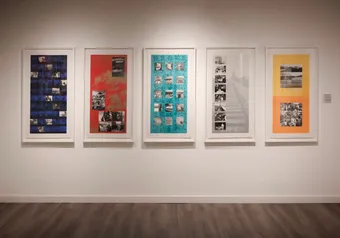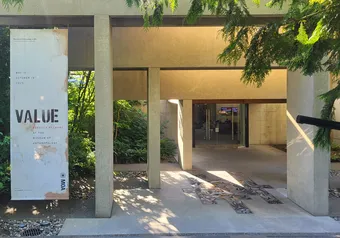The Urasenke Foundation Vancouver Branch has been holding Japanese tea ceremony or chado demonstrations throughout the summer at the tea house in the Nitobe Memorial Garden for 20 years, according to Keith Snyder, a resident tea instructor for Urasenke Vancouver.
The Nitobe Garden was designed by Kannosuke Mori, a landscape architect and professor at Chiba University. Opened in 1960, the Japanese garden includes a tea house that was built for the practice of chado (Way of Tea), a ritualized discipline that concerns the preparation and presentation of matcha (powdered green tea). In 1994, the Urasenke Foundation donated to the restoration of the tea house and dispatched carpenters from Japan to undertake this task.
Hansō Sōshitsu, the 15th generation Grand Tea Master of Urasenke and a UBC honorary doctorate recipient, named the tea house Ichibō-an (Hut of the Sweeping View) upon the completion of its restoration. Since then, Snyder has been volunteering his expertise to look after Ichibō-an.
Chado is a Japanese cultural icon with roots from China. According to Jessica Main, an Asian studies professor at UBC, tea was consumed for medicinal, social and religious reasons in Chinese Zen Buddhist monasteries.
“One of the really interesting things about tea is that it has caffeine in it. And if … you’re a monk, who’s attempting to meditate long hours … something with caffeine in it is really useful,” said Main. “[Tea] served as a way for monastics to connect with each other and to connect with people beyond the monastery.”
Main compared the religious significance of tea to that of wine in Christian communion.
This tradition was confined within China until the ninth century, when Japanese monks went to China to study Buddhism and returned to Japan with the sacred substance: tea.
“Things are done very precisely in specific orders with specific reasons. [Chado is] very attuned to seasonal associations; it’s imbued with ideas in Japan about what kind of aesthetic associations are common.…. You learn how to walk in certain ways; you learn how to move in certain ways. It’s about learning to be graceful,” said Millie Creighton, a professor in the department of anthropology at UBC.
“It’s not intended to ‘be like yoga,’ but there are all these [common] elements that are embedded. It’s a constant practicing of a certain way of using the body…. If you’ve done it a long time, you can begin to naturally incorporate gracefulness into your usual movements," said Creighton.
The Japanese idiom ichi-go ichi-e (one life, one meeting) is central to the philosophy of chado. This notion brings awareness to the present and reminds people to cherish time spent with each person they meet.
“Every single moment is effervescent -- it’s constantly arising, and then that moment will never come again,” said Main. “That’s one of the meanings that stresses on the Buddhist idea of impermanence … [and] on the importance of the present.”
Ichibō-an is only accessible to the public during Urasenke’s chado demonstrations due to concerns that the tea house may deteriorate at a faster rate without staff supervision.
Creighton said that visitors should wear white tabi or white socks to minimize damage to the tatami (rice straw mats) and to symbolize purity and simplicity, and should remove jewellery upon entry.
“[Chado is performed] in a desire to eliminate any kind of artifice, so anything that is added on, like accessories or jewellery should be removed,” said Creighton. “It’s the idea to try to reconnect with the basic inner essence of yourself.”
There is also the practical concern that rings and pendants may scratch or break the elements of the building or the ceramics used in chado.
These etiquettes are taught in Creighton’s Japanese tea ceremony class, under the course code ANTH 403B. Believed to be the first university credit course on chado in Canada, this course differentiates itself from tea lessons offered elsewhere through its combination of the actual chado practice and the academic approach of analyzing and questioning the way chado reflects gender roles, social class and minorities’ position in Japan, according to Creighton.
“A lot of Western art prioritizes vision and then hearing … [but chado] attempts to incorporate all of the senses…. It’s visual, audible, and it encompasses touch, smell … [and] taste,” said Creighton. “It’s learning to understand and have an appreciation for aesthetics in a culturally different way.”
Snyder considered chado unique for being an art that does not distance the performer and the audience. “[Chado is like] games and sports…. It’s an interactive event [where] everyone, hosts and guests, are interacting together to make the experience happen.”
UBC is versatile in offering this interactive cultural experience: a term-long Japanese tea ceremony course, a one-hour tea demonstration at Ichibō-an, or a brief glance at the tatami and utensils displayed at the tea gallery in the Asian Centre. Everyone is encouraged to partake in the soul-cleansing ritual of chado.
A previous copy of this article referred to the "Buddhist idea of permanence." This has been updated to the correct quote.
First online
Share this article







